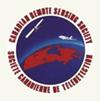次地表散射下c波段雷达后向散射相幅耦合反演土壤湿度和土壤深度
IF 2.1
4区 地球科学
Q3 REMOTE SENSING
引用次数: 1
摘要
摘要在低湿度条件下,强烈反射的基岩下层土壤可以提供主要回报。这提供了一个新的机会,可以使用微分相检索土壤层的体积水分分数(mv)和深度(d)。穿过上覆土壤的雷达波响应于水分状态而变慢;因此,水分动力学被记录为旅行时间的变化——在雷达平台上被捕捉为相位的变化。这里介绍的相位标度电介质(PSD)模型将相位变化转换为土壤电介质中的相位变化,作为估计mv的中间步骤。利用苏丹一个地点的真实土壤湿度时间序列进行模拟,以证明土壤和雷达变量的关联行为,并详细说明PSD原理。实验室验证使用的土壤表层潮湿,深度为1-2 cm和mv干燥 ∼ 0.2 m3m−3,覆盖在深度为11的砾石层上 cm。检索到的方案 = 1.49 ± 0.33 cm和变化Δmv = 0.191–0.021 ± 0.009 m3m−3。本文概述的PSD方案为土壤参数的诊断测量提供了一条新的途径,而雷达遥感目前还不具备这一途径。本文章由计算机程序翻译,如有差异,请以英文原文为准。
Soil Moisture and Soil Depth Retrieval Using the Coupled Phase-Amplitude Behavior of C-Band Radar Backscatter in the Presence of Sub-Surface Scattering
Abstract In low-moisture regimes, strongly-reflecting bedrock underlying soil could provide a dominant return. This offers a novel opportunity to retrieve both the volumetric moisture fraction (mv ) and depth (d) of a soil layer using a differential phase. A radar wave traversing the overlying soil slows in response to moisture state; moisture dynamics are thus recorded as variations in travel time—captured back at a radar platform as changes in phase. The Phase Scaled Dielectric (PSD) model introduced here converts phase changes to those in soil dielectric as an intermediate step to estimating mv . Simulations utilizing a real soil moisture timeseries from a site in Sudan were used to demonstrate the linked behaviors of the soil and radar variables, and detail the PSD principle. A laboratory validation used soil with a wet top layer variable in depth 1–2 cm and drying from mv ∼ 0.2 m3m−3, overlying a gravel layer at a depth of 11 cm. The scheme retrieved = 1.49 ± 0.33 cm and a change Δmv = 0.191–0.021 ± 0.009 m3m−3. The PSD scheme outlined here promises a new avenue for the diagnostic measurement of soil parameters which is not currently available to radar remote sensing.
求助全文
通过发布文献求助,成功后即可免费获取论文全文。
去求助
来源期刊

Canadian Journal of Remote Sensing
REMOTE SENSING-
自引率
3.80%
发文量
40
期刊介绍:
Canadian Journal of Remote Sensing / Journal canadien de télédétection is a publication of the Canadian Aeronautics and Space Institute (CASI) and the official journal of the Canadian Remote Sensing Society (CRSS-SCT).
Canadian Journal of Remote Sensing provides a forum for the publication of scientific research and review articles. The journal publishes topics including sensor and algorithm development, image processing techniques and advances focused on a wide range of remote sensing applications including, but not restricted to; forestry and agriculture, ecology, hydrology and water resources, oceans and ice, geology, urban, atmosphere, and environmental science. Articles can cover local to global scales and can be directly relevant to the Canadian, or equally important, the international community. The international editorial board provides expertise in a wide range of remote sensing theory and applications.
 求助内容:
求助内容: 应助结果提醒方式:
应助结果提醒方式:


